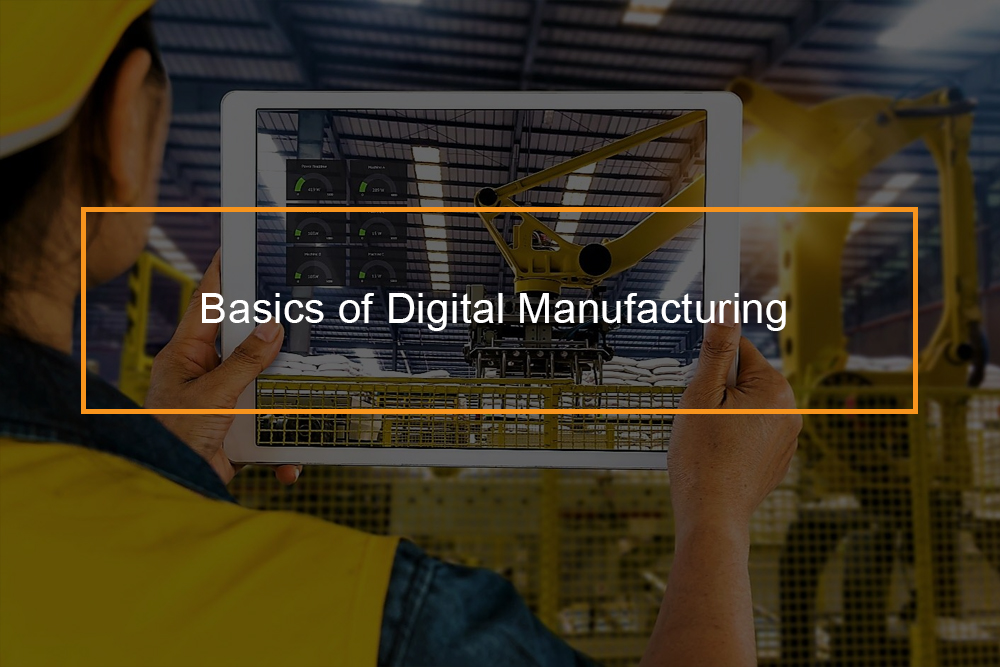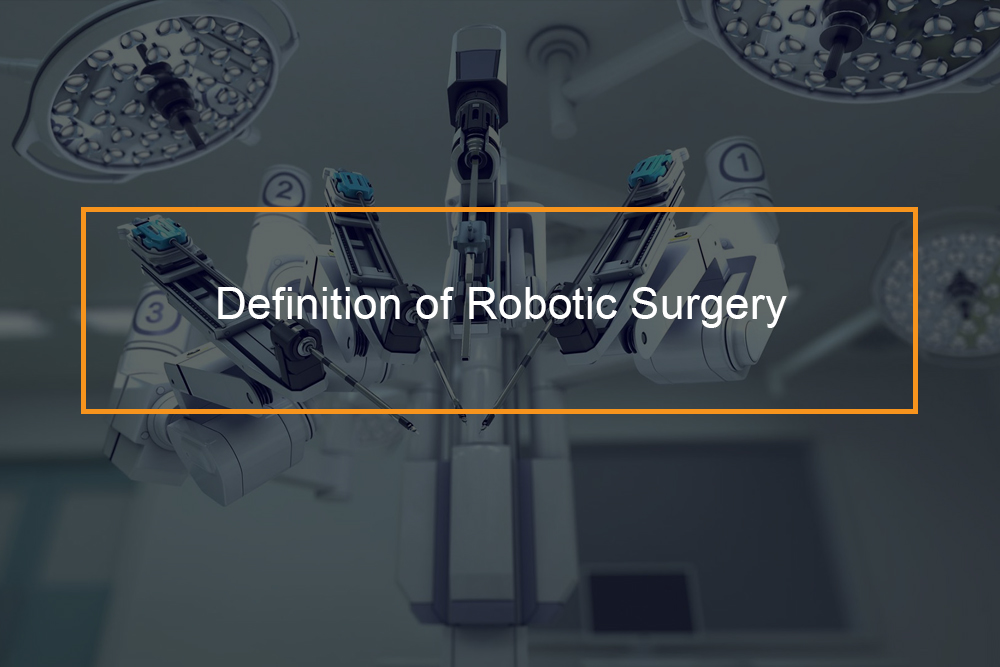
Digital Manufacturing includes advances such as, 3D printing, laser cutting, and water streaming are creation advances that have digital inputs. A CAD or other 3D document translates into Gcode which this way positions the machine to make the part. The mix of going specifically from a plan to a 3D model to Gcode to a section formed on an advanced assembling machine is an amazing one. The entire toolchain from record to guidelines for the device is sophisticated. It implies it is frictionless and straightforward to adjust. Parameters, changes in plan, creation updates and following of the part can in a split second be accessible around the world. If one likewise utilizes 3D scanners and other mechanized quality estimating hardware, your assessment and quality control can also be digitized. The subsequent information can be dissected and spread around an association or biological community.
What is Meant By Digital Manufacturing?
Breaking Down Digital Manufacturing?
Digital manufacturing is the utilization of an integrated, computer-based framework involving simulation, 3D representation, collaboration, and analytics to build products and manufacturing process definitions all the while. Digital manufacturing developed from assembling or manufacturing activities, for example, design for manufacturability (DFM), adaptable assembling and lean assembling that feature the requirement for a shared item and process plan.
Majority of the long-term profits from product lifecycle management (PLM) won’t be complete without a thorough advanced assembling procedure. Digital assembling is a crucial purpose of reconciliation among PLM and shop-floor gear and applications, empowering the trading of product-related data among structure and assembling gatherings. This arrangement enables manufacturing factories to accomplish time-to-market and volume objectives, and also acknowledge cost reserve funds by reducing costly downstream changes.
Three Sections of Digital Manufacturing
Digital manufacturing can split into three measurements: (a) Smart Factory, (b) Product Life Cycle, and (c) Value Chain Management.
-
The Product Life Cycle
It begins with a building plan definition and finishes sourcing, generation, and administration life. Advanced information for each progression incorporates each joined correction, any affirmed deviations from structure qualities and how they run across over the life cycle.
-
The Smart Factory is About Mechanization
It envelops keen machines, sensors and tooling to give laborers ongoing information about the procedures they are executing. It frames the scaffold between Operations Technology (OT) that trades information straightforwardly with machines and tooling, and Information Technology (IT) frameworks and applications. Both are made better by business insight frameworks that perform inside and out an investigation. It prompts continuous clarity of modern facility forms, process control enhancement, and understanding into potential zones of execution or process enhancement.
-
Value Chain Management
It centers around limiting assets and getting to an incentive at every partner work along the chain. It results in an ideal process combination, diminished inventories, better items, and upgraded consumer loyalty.
Benefits of Digital Manufacturing
12 Main Benefits of Digital Manufacturing
Digital manufacturing can make a big deal about processing as moldable and right away transportable around the globe; that’s why we’ve focused on these thirteen benefits:
- Digital manufacturing enables manufacturing organizations to enhance profitability in arranging and creation forms, in the accompanying ways.
- Empowers item, process, plant and asset data to be related, seen and taken through change forms, with a reliable and exhaustive approach to deal with generation structure.
- Enables part manufacturing procedures to be streamlined inside an oversaw domain to deliver adaptable work directions equipped for showing 2D/3D part data, alongside machining and tooling guidelines.
- Diminishes dispatching costs through reproduction by approving mechanical autonomy and mechanization programs for all intents and purposes.
- Encourages you to make industrial facility models quicker and guarantee they are working under ideal format, material stream, and throughput before generation increase.
- Backings six-sigma and lean activities by giving a graphical domain to break down the dimensional variety.
- Encourages the sharing of valuable information over your association by creating complete, evident CAD-based machine investigation programs to facilitating estimating machines (CMMs) and numerical control (NC) machine apparatuses.
- Executes generation forms with constant access to lifecycle data.
- Use Cloud Computing to Link Digital Structures to Customers. Ever feel like you and your representatives invest more energy battling fires than being proactive? It is likely the consequence of detached frameworks, disengaged/manual procedures, or value-based structures. Cloud computing empowers a dimension of availability that wasn’t beforehand accessible to little and fair sized organizations—and that is the reason it’s at the focal point of associated production.A manufacturing cloud ERP, joined with a ground-breaking fabricating execution framework (MES) empowers you to catch, digitize, and get to all movement on the shop floor, so you recognize what’s regularly occurring and you can be proactive in your methodology. From that point, you can interface your machines and your business more efficiently than any other time in recent memory.Gone are the times of extensive interests in equipment or database stockpiling. We stress over that; you should concentrate on your business. With the cloud, your kin doesn’t need to be nearby; the cloud enables everybody to interface from anyplace, on any gadget—safely. This “dependably on” availability gives you ongoing knowledge into how your activities are performing so that there’s no more mystery engaged with boosting productivity.
- Digitize Your Shop Floor.The shop floor is the place material moves, items undergo construction, and work completes. What’s more, operational magnificence is as yet key to separating your business from your rivals and keeping clients upbeat. It is virtually unimaginable in the case despite everything you’re utilizing manual, paper-based procedures. With the cloud as your establishment, you can catch and digitize shop floor exercises at that point computerize operational procedures to perceive what’s occurring in the “fabricating minute.” You’ll realize when the stock is too low, how you’re performing with quality administration and where materials are in the generation procedure. The more you associate and mechanize your shop floor forms, the greater clarity, and control you’ll have over your activities.
- Use Connected Digital Manufacturing to Organize Stocks. Your business may battle with the absence of clarity into stock, prompting stock outs or overabundance stock. Without a far-reaching inventory network arranging process, you presumably have assist expenses in getting items to your clients on time. With connected manufacturing, your chance is to utilize deals, promoting, monetary, building, and operational information to drive a creation plan that considers so you take care of demand with the correct dimension of stock.
- Connected Manufacturing Brings Motivated Employees Together. Connected manufacturing isn’t just about getting increasingly out of your machines and materials. It’s additionally about taking advantage of your kin. Your kin is essential in helping you achieve your objectives. Connected manufacturing encourages you separate data obstructions and departmental reasoning. It conveys the correct data at the perfect time so they can carry out their employment all the more successfully.When you separate the obstructions to response, you can all the more effectively center your most astounding quality representatives around your most high-value work. Workers invest little energy in traditional errands and additional time concentrating on process upgrades. Connected manufacturing is additionally an approach to pull in more active, gifted ability who are searching for innovation forward conditions. You can concentrate individuals on utilizing the information they produce every day for persistent enhancement to drive significantly more productivity.
Digital Manufacturing Examples
10 Essential Digital Manufacturing Examples
At last, for organizations hoping to work all the more effectively and intensely, computerized fabricating models can make clear business results that can be acknowledged from the production line floor the distance to the boardroom. Here are ten typical examples:
1. Creation OF 3D-Printed Food
Cornell University and other research locales are investigating 3D-printed nourishments, for example, vegetable wafers and meat glues. Under a NASA give, a little organization in Austin, Texas is at present chipping away at a 3D printer utilizing materials from long-capacity powders, suspended oils, and water to make 3D-printed pizzas that will cook to finishing on a sustenance printer. Cornell’s understudies as of now print out custom cakes and finger-nourishments.
2. Tissues and Organs
Past the necessary natural materials expected to 3D-print muscle tissues and foodstuffs, added substance producing bioprinters .with the ability to make complex multi-cell matrices that can develop into useful organs and trade tissues for individual beneficiaries. One major advantage of these plans is that they can make utilization of a beneficiary’s cells, delivering implantable substitutions that don’t require a lifetime routine of immunosuppressive drugs to avoid transplant dismissal.
3. Body Parts Replicas
Until bioprinters can make substitution living tissues, 3D printing still has a promising medical job: It permits the manufacture of prosthetics and embeds splendidly coordinated to the first body part (or reflected from useful body parts) to give individualized substitutions. The prosthetic can change through 3D printing into a suitable replacement, as well as a masterpiece, one that precisely mirrors the wearer’s identity.
4. 3D Printing To Design Clothes
3D printing permits the making of materials and other body enhancement. One such item would be custom-fit athletic wear equipped for giving the competitor better footing and diminished weight; another future sleek full-body covers particularly customized to every wearer’s body estimations. The potential for exceptionally fabricated pieces of clothing has sprung up in anecdotal works. However, today it is in transit to turn into reality. Marking can go well past sewed gators on the lapel of a shirt to incorporate trademarks (or advertising messages) in each part of the structure.
5. Work of Art Customization
One of the most particular employments of little 3D-printed things was in the formation of altered plastic hoops and pendants. Today this has developed to incorporate important manifestations that catch the excellence of math in a sturdy frame, utilizing valuable metals that can be worn to suit the inclinations of a wearer or the prerequisites of the creator. Indeed, even plastic segments are being utilized to form dioramas of whole rooms in full scale, and to construct large centerpieces speaking to the investment and inclinations of individual artisans in a group made solidified creation.
6. 3D Customized Movie Props and Costumes
Show creators had since a long time ago made sets and props for motion picture preparations. However, the capability of 3D printing has made it conceivable to by and by fit an ensemble to an individual performer. A model is Tony Stark’s radiant Iron Man outfit, made to fit performing artist Robert Downey, Jr’s. Correct measurements—through the enchantment of 3D printing. Also, when Hollywood needed to explode James Bond’s exemplary 1964 Aston Martin DB5 from Sean Connery’s time in the job, the first vehicle ($4.6 million) the production were able to save; a 3D-printed imitation remained in as the “stunt twofold.”
7. Utilize Elements Found In Space
3D-printed work of art can create whole structures sufficiently huge to live inside. Utilizing standard crude materials, for example, sand and lunar regolith, this capacity will upgrade the ability to investigate new universes or to design satellites in space — utilizing elements got from space rocks, and different sources found richly in the nearby planetary group, instead of transporting materials from Earth at extraordinary expense.
8. 3D Prints Assist in Turbine Designs
Aviation plans for elite turbines and stream motor blowers can emulate their design from single-print protests instead of regular gatherings of little parts. One favorable position is that joining parts can cause failures and require completing the process of amid assembly into their last shape — however, a 3D-printed protest is as of now one piece. In the long run, they will bring with them the capacity to make the necessary things from materials they find amid their movements.
9. Robot Construction
Computerization and robotics are changing the world into a very natural and self-controlling condition. The apparatuses they use for these reasons for existing are frequently custom-manufactured plans. 3D printers are making a similar potential accessible to singular creators and originators who are finding out about robot technology or who are growing little generation keeps running of custom apply autonomy suited to a specific reason also thin to draw a business generation of handcrafts by vast ventures. Complex linkages and associations between segments can be effortlessly made utilizing 3D printers to frame one-off sections, and different components fit precisely the need existing apart from everything else.
10. Printing 3D Printers
Past fundamental mechanical technology, 3D printers are currently making it conceivable to mold more 3D printers utilizing essential automated controls and linkages together with custom sections and usual off-the-rack equipment. At the point when essential licenses on FDM/FFF thermoplastic expulsion lapsed in 2006, Dr. Adrian Bowyer’s self-replicating RAPid prototyping (RepRap) framework became available to the world as an open-source plan — and a capacity once just accessible in labs and top of the line producing offices turned into a family unit apparatus costing not precisely the first LaserJet printers. Today, RepRaps of many different plans and their posterity are accessible in schools and even office supply stores. Each of these can be utilized to print a significant number of the segments for another printer thus, using open-source plans uninhibitedly accessible on the web.
Digital Manufacturing Process
How Does Digital Manufacturing Process Work?
CIMdata considers digital manufacturing to be an emerging technology and a vital element of Product Lifecycle Management (PLM). Numerous manufacturing companies are extending their PLM solutions to include manufacturing engineering, including process planning functions as well as those functions within a design or product engineering, and other elements of the product life cycle. PLM encompasses the entire product lifecycle, and digital manufacturing is an element of that life cycle.
CIMdata states PLM as “a vital business approach that applies a predictable arrangement of business arrangements in the help of the synergistic creation, the board, scattering, and use of item definition data over the all-encompassing undertaking from idea to end of life—incorporating individuals, forms, business frameworks, and data.” Digital assembling, or Manufacturing Process Management (MPM), is a vital segment inside PLM. All producers ought to be discerning of this innovation and evaluate regardless of whether it fits for their activities.
The idea of simultaneous advancement of both the item and the procedure to create the product came to be via simultaneous designing. These improvements are regularly two particular however related advancement strings. Product and Concept engineering are primarily worried about the development of an item, and assembling designing is worried about the advancement of the procedure to deliver the thing.
Benefits of Digital Manufacturing In Different Sectors
Digital Manufacturing is an activity to characterize and manage manufacturing processes data; it also supports effective collaboration among engineering sectors by utilizing full digital product definition, by utilizing the full advanced item definition. It supports representation, fabricating reproduction, ergonomic and human factor investigations, and other building examination apparatuses essential to advance the assembling procedure plan. It additionally encourages the comprehensive perspective of item and process plan as crucial parts of the overall item lifecycle and empowers item configuration to be touchy to process imperatives and abilities.
Advanced Assembling Incorporates Programming support for Useful Sectors
- Interpretation of plan information to assembling
- Full process arranging
- Creation tasks arranging and machining process arranging
- Get together definition and sequencing
- Point by point line, cell, station, and undertaking plan
- Quality estimation and revealing
- Assembling documentation, shop floor guidance, and coordinated effort
Individual useful capacities, in light of best practices, are regularly joined in an MPM offering to give full industry-situated arrangement contributions for assembling tasks. Precedents incorporate car “body in white,” car powertrain, car assembly, airframe assembly, gadgets PCB assembly, and others. Although the advantages are noteworthy, the extent of the advanced assembling programming market is right now generally humble and includes one of the little sections of the PLM commercial center. Albeit a significant part of the innovation was presented various years prior, it is merely starting to pick up acknowledgment. Those producers who are actualizing the change are regularly in the early stages.
What is Direct Digital Manufacturing (DDM)?
Understanding Direct Digital Manufacturing (DDM)
DDM consistently is the manufacture of segments from PC plan to a real part that is close. Likewise known as “3D printing” or “added substance,” “quick,” “moment,” “on-request” producing, It utilizes 3D PC supported plan records to drive the PC controlled creation of parts. Dissimilar to common machining strategies, which include working from a harsh form and after that removing to accomplish the ideal complex shape, advanced coordinate assembling makes the way correctly and in a split second, utilizing added substance manufacture.
DDM is similar to the case of designing an espresso mug. An old-style expert may gradually shape a bit of dirt by hand into a handcrafted cup. Originators and engineers in a plant would manufacture a progression of metallic shape and after that make progress of instruments to process metal into the critical segments of the container (handle, base, and so on.), which would then be amassed on a creation line, regularly through welding. Paradoxically, a DDM originator would make a computerized 3D model of the glass, at that point turn creation over to the PC, which would carefully cut it into a pile of thin layers, print them out, and intertwine them.









